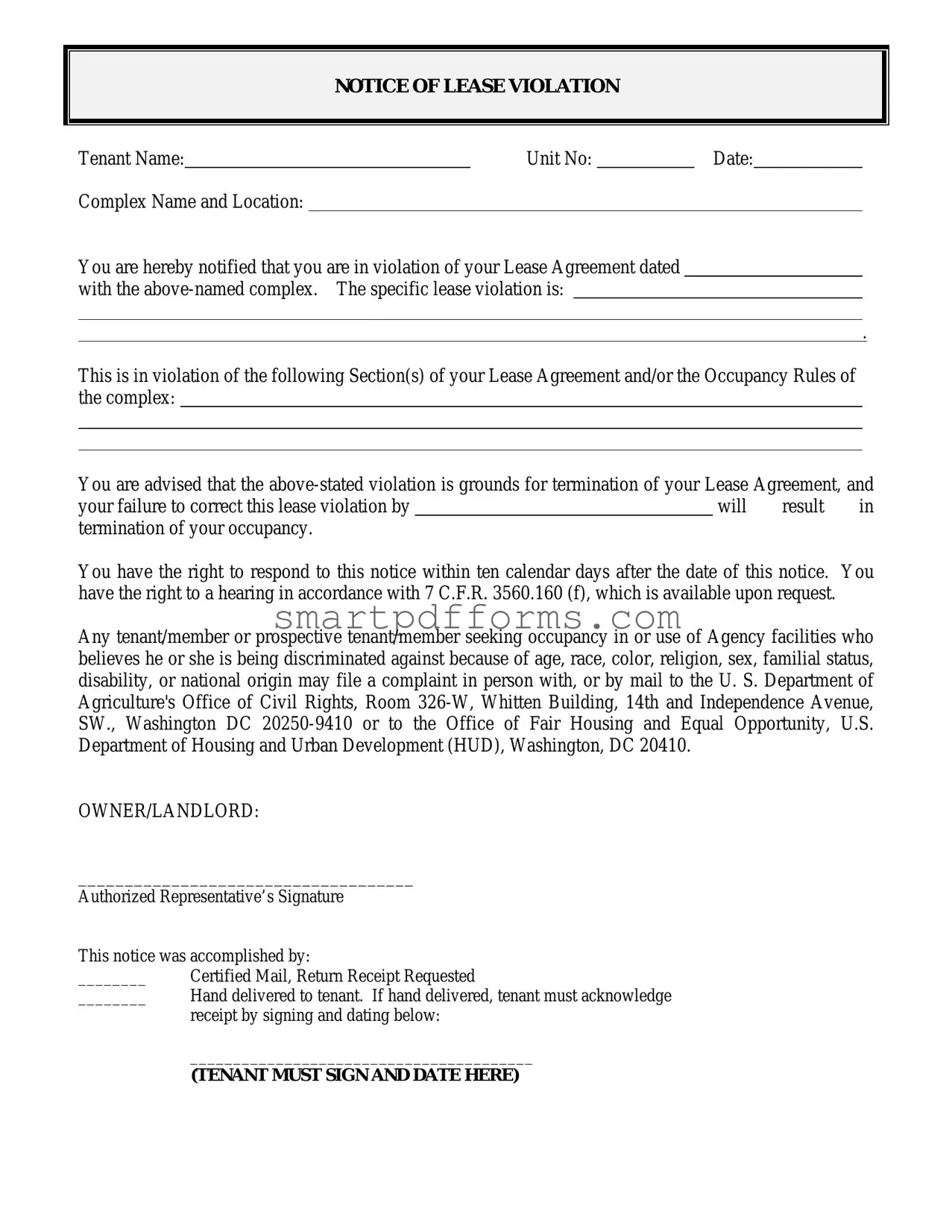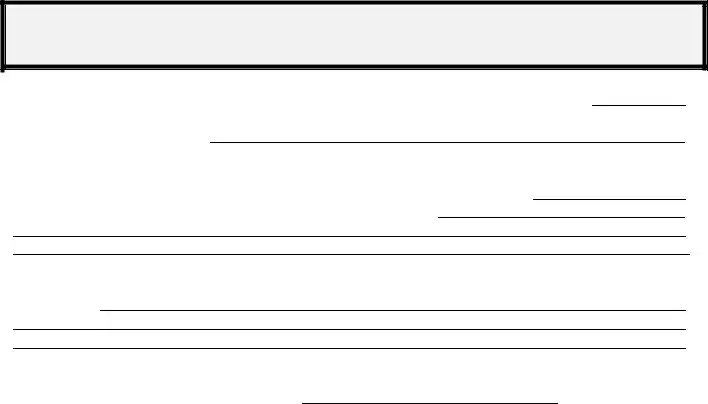NOTICE OF LEASE VIOLATION
Tenant Name: |
|
Unit No: |
|
Date: |
Complex Name and Location:
You are hereby notified that you are in violation of your Lease Agreement dated with the above-named complex. The specific lease violation is:
.
This is in violation of the following Section(s) of your Lease Agreement and/or the Occupancy Rules of the complex:
You are advised that the above-stated violation is grounds for termination of your Lease Agreement, and
your failure to correct this lease violation bywill result in termination of your occupancy.
You have the right to respond to this notice within ten calendar days after the date of this notice. You have the right to a hearing in accordance with 7 C.F.R. 3560.160 (f), which is available upon request.
Any tenant/member or prospective tenant/member seeking occupancy in or use of Agency facilities who believes he or she is being discriminated against because of age, race, color, religion, sex, familial status, disability, or national origin may file a complaint in person with, or by mail to the U. S. Department of Agriculture's Office of Civil Rights, Room 326-W, Whitten Building, 14th and Independence Avenue, SW., Washington DC 20250-9410 or to the Office of Fair Housing and Equal Opportunity, U.S. Department of Housing and Urban Development (HUD), Washington, DC 20410.
OWNER/LANDLORD:
____________________________________
Authorized Representative’s Signature
This notice was accomplished by:
________ |
Certified Mail, Return Receipt Requested |
________ |
Hand delivered to tenant. If hand delivered, tenant must acknowledge |
|
receipt by signing and dating below: |
|
________________________________________ |
|
(TENANT MUST SIGN AND DATE HERE) |

